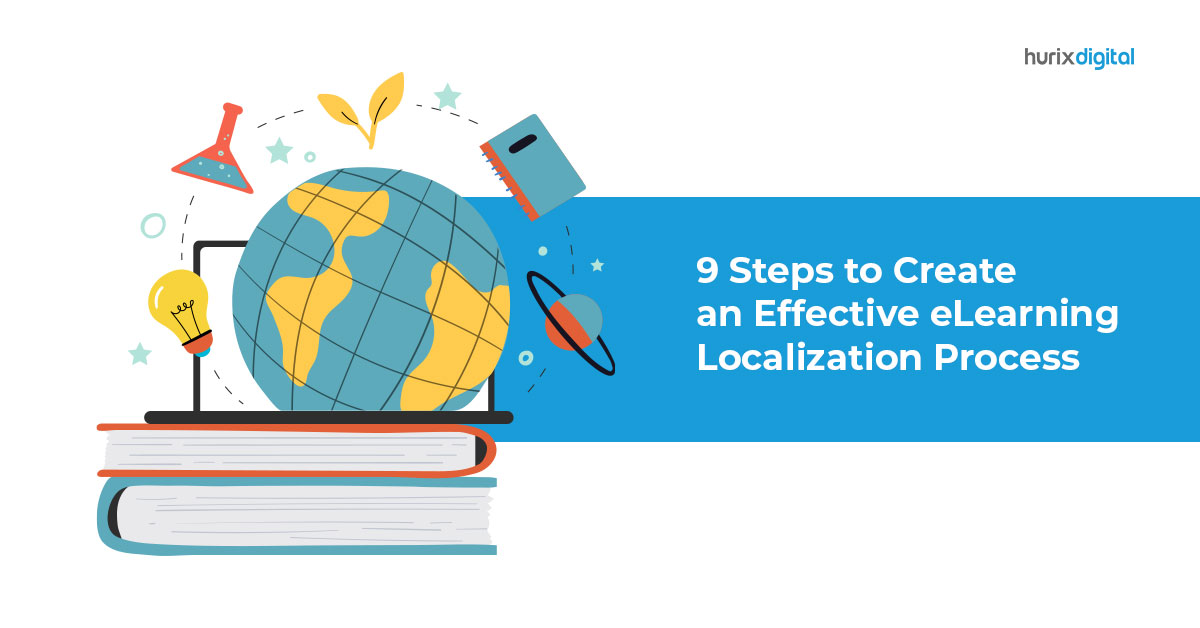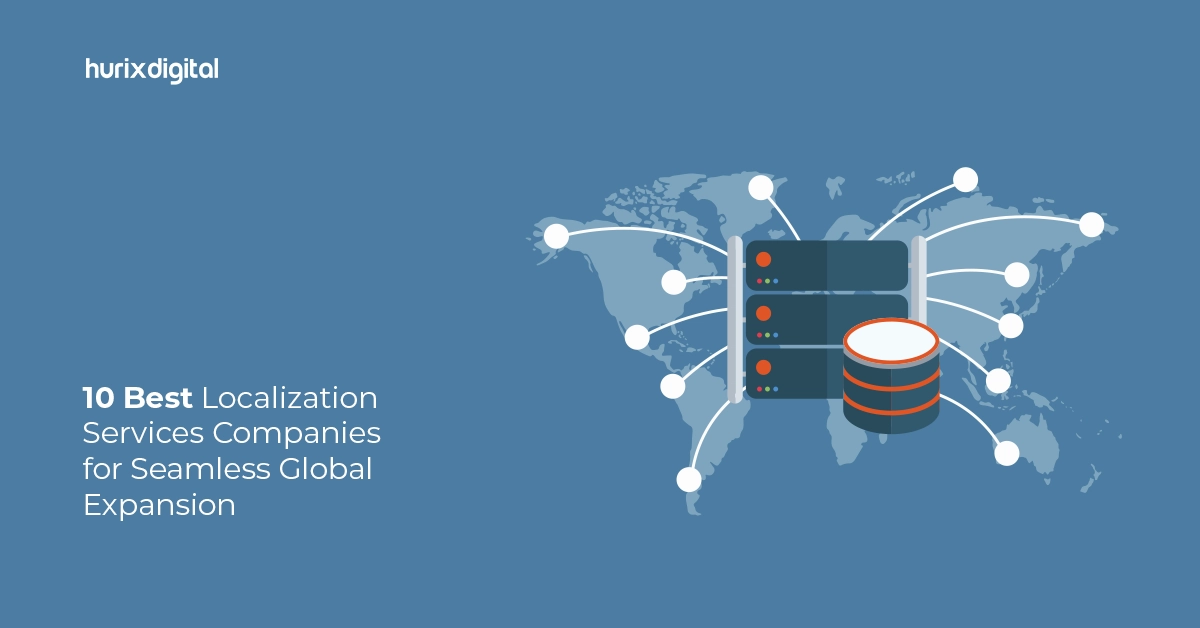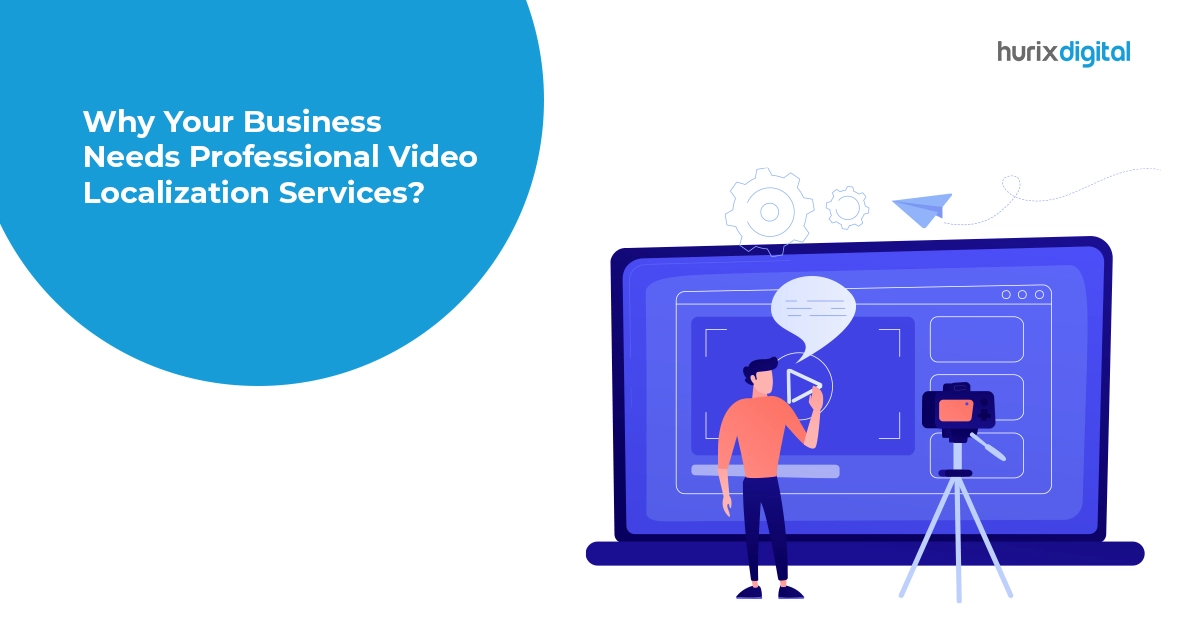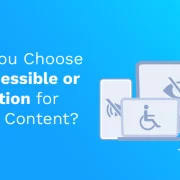
9 Steps to Create an Effective eLearning Localization Process
Summary
Learn the nine essential steps for creating an effective eLearning localization process to ensure that training materials are accurately adapted for global audiences.
“eLearning is changing. And we will see new models, new technologies, and designs emerge. So, let’s drop the “e” – or at least give it a new and wider definition.”
– Elliot Masie
That’s a hard-hitting quote from Masie, who coined the term ‘eLearning’ in 1998. eLearning has changed so much over the years that it is now the norm and just the new “learning.”
One of the biggest trends in eLearning is to make it available to a larger population in a language they resonate with the most. This eLearning localization process is essential for deeper retention and more effective learning. A brain imaging study found that familiar languages elicit a more robust response.
Table of Contents:
- What is eLearning Localization? Understanding Before Implementing
- 9 Key Steps for an Effective eLearning Localization Process
- Step 1: Don’t Make eLearning Localization an Afterthought
- Step 2: Collect Global Data
- Step 3: Identify the Target Audience
- Step 4: Define the ‘What’
- Step 5: Define the ‘Who’
- Step 6: Pay Special Attention to the Design and Graphics
- Step 7: Test, Test, Test!
- Step 8: Don’t Forget to Comply with the Legal Requirements
- Step 9: Partner with An eLearning Localization Expert
- Analyze, Optimize, Localize
What is eLearning Localization? Understanding Before Implementing
Academic or corporate training localization for eLearning modules can do wonders. It can also be helpful for anyone trying to learn a hobby as a new skill.
eLearning localization involves these three key points to increase ease of use and get maximum impact:
- Language translation, where the eLearning material is adapted into multiple languages.
- Cultural context, which goes beyond simple translation, eLearning localization considers the norms, beliefs, practices, and preferences to increase relevance.
- Legal and regional adaptability means considering the local regulations and regional context.
Also Read: 7 Factors to Consider for Large-Scale eLearning Content Localization
9 Key Steps For An Effective eLearning Localization Process
We’ve created a step-wise eLearning localization strategy that ensures you’ve covered all grounds.
Step 1: Don’t Make eLearning Localization an Afterthought
If planned during the early stages of creating the eLearning modules, you can save time and resources to localize the content. For example, if the planning begins at inception, you can use simpler graphics, global fonts, universal stories, idioms, slang, etc.
Factor in the contraction and expansion of a language (when translated from English, for example, the length of a module in Japanese could be longer) or the direction is written. With this, when the time comes for localization, massive changes don’t need to be made to the content.
Step 2: Collect Global Data
Think big. Think global from the beginning. Decide what countries could be your potential markets. Speak to the people there, understand the language and the customs, and gather as much data as possible.
You could create a questionnaire to organize the information you get to turn this information into knowledge later. Having this data at hand right at the beginning can remove the biggest stumbling block for eLearning localization after that.
Step 3: Identify and Understand the Target Audience
You may start the localization process with one or two languages. Where are most of your employees or students from? Pick that country and start with it.
As a starting point, you can look at your website analytics or the location from where most of your customers are from, etc. Once you have identified the target audience, learn more about their customs. The devil is in the details.
Colors, measurement units, the side of the road where you drive — all those little things make an eLearning localization process successful. For example, purple may mean royalty in Britain but means death and mourning in Thailand.
Step 4: Define the ‘What’
The next step might sound easy, but here’s where many falter. What do you want to localize? It can get complicated if you begin localizing all of your content simultaneously.
Start with what’s most important, learn from it, and then apply those learnings to a broader canvas. You may start with the three most-important or high-performing modules. Brainstorm with your team on where to begin.
Step 5: Define the ‘Who’
Set up a team of experts who can handle the eLearning localization process. They don’t have to be the ones who localize it if you are engaging with a localization partner providing eLearning localization solutions. But assign responsibilities to different people and hold them accountable.
Who will do the quality check? Who will track the performance metrics? Who will manage the project? And so on. This brings in accountability and keeps your localization process on track.
Step 6: Pay Special Attention to The Design and Graphics
It matters significantly to focus on the graphics and design of your modules along with the language. Some symbols used in one country might offend the people of another or not make the point.
Say you have a video where the instructor uses different gestures common in the United States, but they may attract confused looks in Japan. Avoid misinterpretation of the course content and design it thoughtfully. Consult localization experts to avoid making mistakes.
Step 7: Test, Test, Test!
Do a beta test in the target market before you make the content live to the public. This will be like mining for gold. You’ll hear it straight from the horse’s mouth and still have time to improve the eLearning modules. This is also a sure-shot way to avoid offending people.
Through the test, you can also check for technical issues. For example, a feature-rich module may not work in areas with limited connectivity. You can also check for other bugs and fix them before it goes live to create a seamless user experience.
Step 8: Don’t Forget to Comply with the Legal Requirements
There are a lot of regulatory topics to adhere to for digital learning solutions, like data privacy, intellectual property, accessibility, educational norms, piracy, etc. These vary from country to country.
Non-compliance could result in complaints and legal proceedings that could put a temporary stay or permanent ban on the module in that area. This would mean you’d either need more resources to steer through the legal issues or let the ones you used to localize the module go to waste.
Step 9: Partner with eLearning Localization Providers
The best way to go about an eLearning localization process would be to hire someone who knows what they’re doing and avoid all the potential pitfalls.
Experts like Hurix Digital provide eLearning and training solutions for various verticals. These can be gamified, customized, simulated in sync with the business context, combined into learning paths, etc., and localized.
Also Read: eLearning Localization – The Next Big Trend in Employee Training
Analyze, Optimize, Localize
eLearning localization may seem difficult at first, but if you follow these steps, it won’t be rocket science anymore. Once you localize your content, it is essential to keep updating it consistently. Incorporate feedback and derive insights from analytics to make it stay relevant in the long term.
However, if you are looking for perfection, you can contact the experts at Hurix Digital and book a free demo for eLearning localization services. Hurix Digital offers many end-to-end digital content localization services to create immersive learning experiences. These fully-customizable eLearning solutions offer instruction effectiveness, engaging visuals, and responsive design using various cutting-edge tools.
Get in touch with Hurix Digital to know more!

Performance, Results, Growth, and Life-Long Learning define my professional life. I am passionate about making workplace learning planful, purposeful, and impactful. I take pride in partnering with clients and bringing them the best in learning design and creating solutions that address business challenges.







